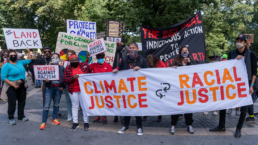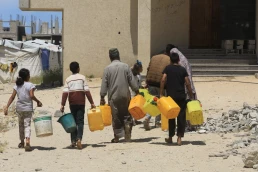To effectively fight against environmental racism, the U.S. government must work to protect BIPOC neighborhoods from the racial discrimination that puts them in danger of pollution and its negative effects.
By Sophie Hirsh, Green Matters
No one on Earth is safe from the effects of the climate crisis — but many are impacted by it much more than others. The truth is, climate change unfairly targets people of color, highlighting how the climate crisis and racial injustice are inextricably linked. All of this falls under the umbrella of environmental racism — but what is environmental racism, exactly?
The federal government has just made a disappointing declaration in regards to fighting for environmental justice, announcing that it will no longer consider race as a factor. Read on for a look into this news, and to learn about the basics of environmental racism.

What is environmental racism?
Dr. Robert Bullard, known as the “father of environmental justice,” defines environmental racism in his book Dumping in Dixie as “any policy, practice or directive that differentially affects or disadvantages (where intended or unintended) individuals, groups, or communities based on race,” as reported by the UNM Newsroom.
Essentially, environmental racism refers to the ways environmental issues disproportionately affect people of color, BIPOC communities. And this is never accidental, but rather systemic, as governments, corporations, industries, and people in power enact policies and build hazardous infrastructure in communities of color. In fact, according to the NAACP, the top factor for toxic facility locations in the U.S. is race.
Recent Posts
“Arrest Now, Ask Questions Later”: Why Did L.A. ICE Agents Arrest and Jail U.S. Citizen Andrea Velez?
July 3, 2025
Take Action Now “They didn’t have vests that said ICE or anything. Their cars didn’t have license plates. … Just because of the color of our…
Trump’s Big, Beautiful Bill Is Naked Class War
July 3, 2025
Take Action Now Trump’s “Big, Beautiful Bill” trades tax cuts on millionaires for the dissolution of society.By Hamilton Nolan, In These Times…
Mayor Mamdani’s First Day, A Zero Hour Conversation With Richard Wolff
July 2, 2025
Take Action Now If elected, what would Mayor Mamdani do on his first day in City Hall? How would a democratic socialist govern as a big-city mayor?……
The U.S. Is Funding A Bloodbath At Gaza Aid Centers
July 2, 2025
Take Action Now The admin just gave $30M to GHF, the organization at the center of charges that Israel is weaponizing assistance and shooting at…




